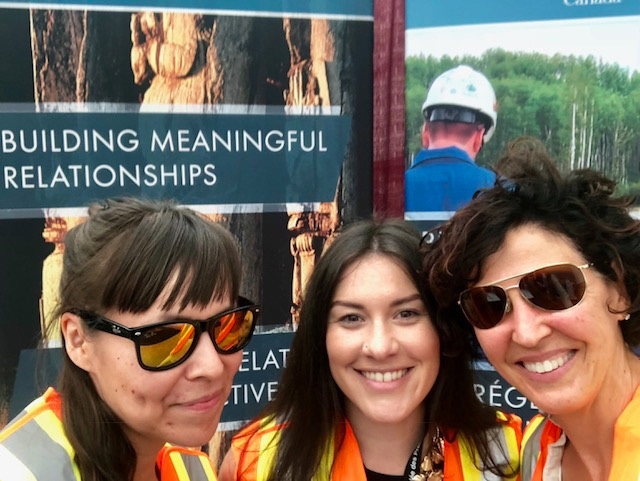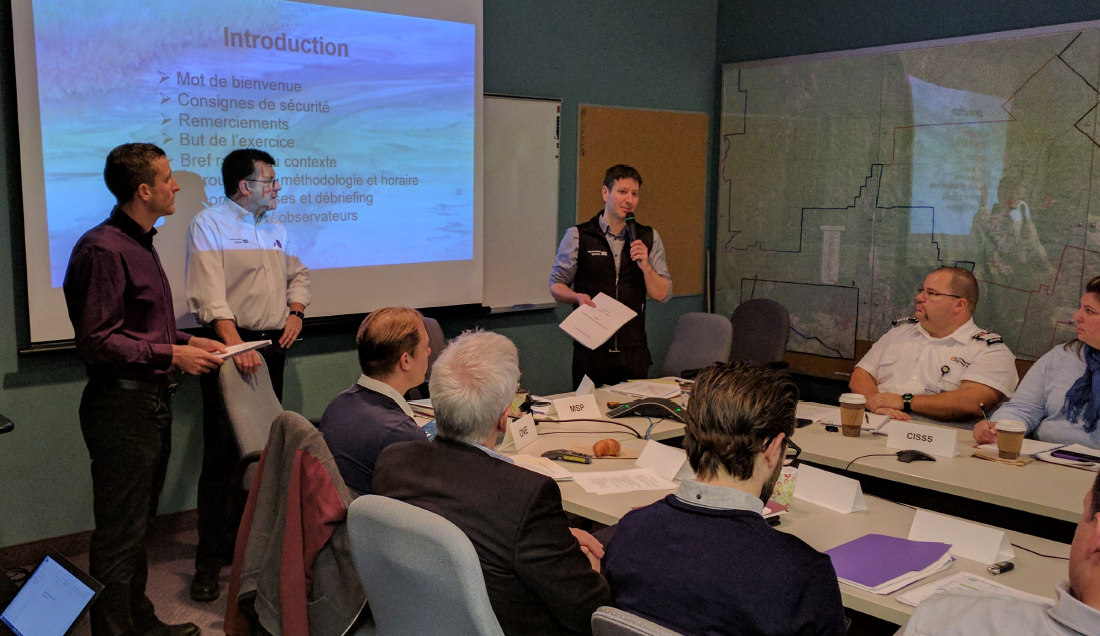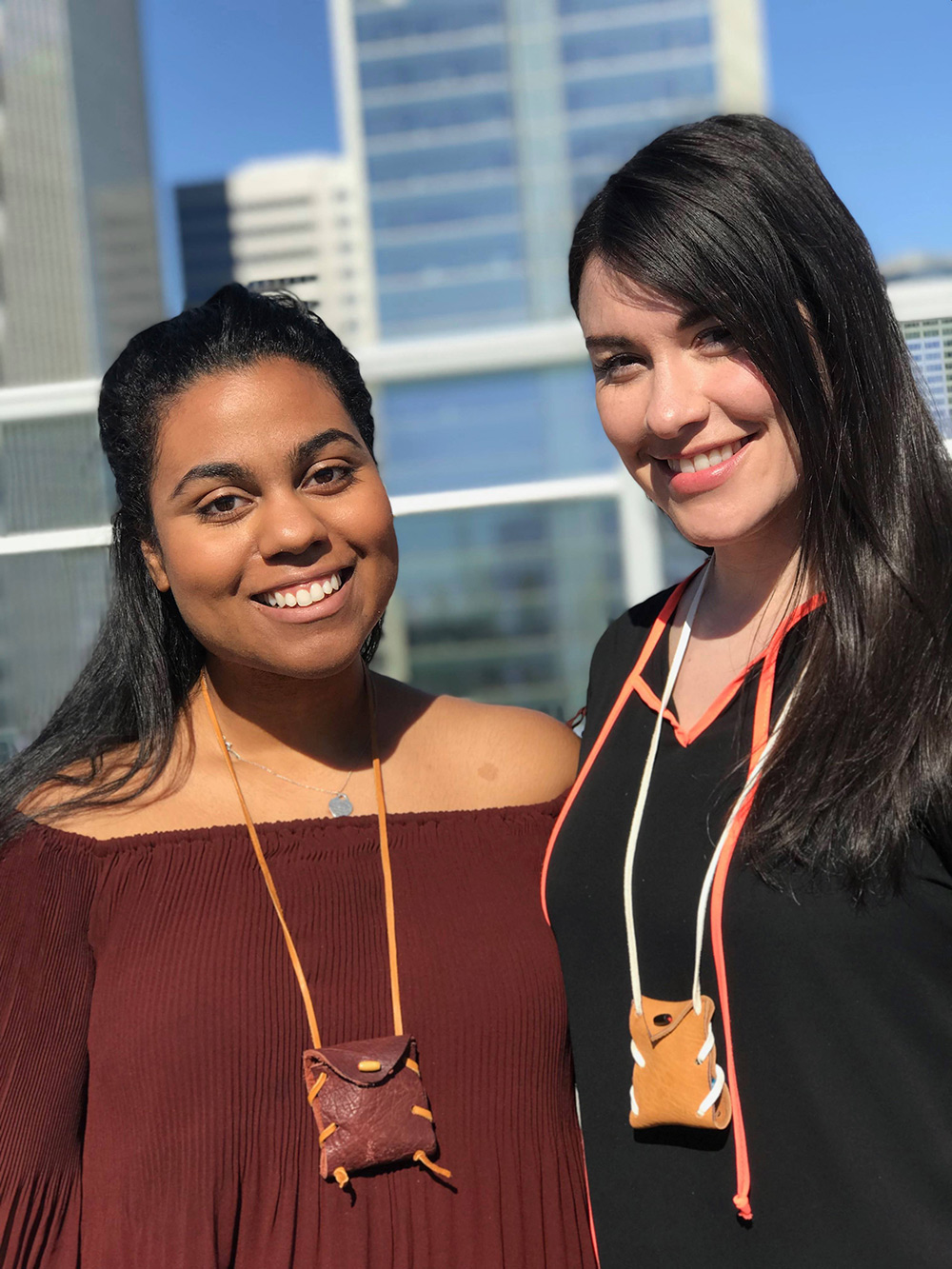Engagement
The NEB engages with stakeholders and Indigenous Peoples on topics within the National Energy Board’s mandate and role, beyond engagement on specific projects.
In order to prevent harm, keep Canadians safe, protect the environment, and prevent market inefficiencies, the NEB is committed to listening to what people have to say and sharing the unique information we have as a regulator. Engagement leads to more informed decisions and recommendations that support safety and environmental protection, energy literacy and public transparency across every aspect of our work.
Our Commitment
Stakeholders and Indigenous Peoples share their perspectives and provide feedback regarding the National Energy Board mandate and role.
National Energy Board engagement activities with stakeholders and Indigenous Peoples are meaningful.
Engagement Activities in 2018-19:
-
 9,269
9,269
# participants in NEB Engagement Programs -
 82%
82%
% increase in participants from 2017-18 -
 196
196
Indigenous Engagement events -
 150
150
Stakeholder Engagement events
Performance Results – Engagement
Number of participants in National Energy Board engagement programs, to track how NEB Engagement is expanding, and where and with whom we target our engagement effort.
- Target 5,000
- Results
2017-18 4,270 - Results
2018-19 9,269
Percentage of surveyed stakeholders who engaged with the National Energy Board who indicate that the engagement was meaningful.
- Target 75%
- Results
2017-18 76% - Results
2018-19 84%
Percentage of surveyed Indigenous Peoples who engaged with the National Energy Board who indicate that the engagement was meaningful.
- Target 75%
- Results
2017-18 80% - Results
2018-19 80%
Key Initiatives in 2018-19
- Expanded public engagement by enhancing the capacity of regional and national committees to allow for the provision of input focused on improving our decisions and our work
- Emphasis on enhancements to Indigenous monitoring and landowner advisory services
- Expanded training options available to employees to build cultural competency and engagement skills and conflict management training
- Continued commitment to the IAMCs
- Increased emphasis and common engagement approaches across all NEB programs
A New Vision: Renewing Engagement at the NEB

Over the past year, the NEB has created new and additional opportunities for engagement between the NEB, Indigenous Peoples and stakeholders. We have progressed - taking in and applying learnings from our initial program activities and the new relationships we are beginning to build. We have found that comprehensive engagement leads to better outcomes for all.
The establishment of a Three-Year NEB Focus Area on Reconciliation reflected an organization-wide understanding and agreement that as we modernize assessment and lifecycle oversight activities, we must also reconcile our relationships with Indigenous Peoples and engage differently. The establishment of this enterprise-wide Focus Area means the NEB is poised and ready to transform the way we work with Indigenous Peoples by recognizing their unique culture, knowledge and history, and endeavoring to reflect a renewed nation-to-nation relationship based on recognition of rights, respect, co-operation and partnership. Building on the success of the two way dialogue that has been a hallmark of northern Indigenous Engagement and the Indigenous Advisory Monitoring Committees (IAMCs), the NEB is focusing on enabling Indigenous Peoples to ask questions, learn, share perspectives, collaborate and inform improvements to the NEB’s work.
Program staff applied the rich feedback and learnings from past performance assessments and developed a new program framework that is carefully aligned with the changes presented in Bill C-69 and with the principles of regulatory excellence and Reconciliation. The new performance framework will shape and drive how the NEB uses engagement to influence regulatory outcomes.
Engagement involves dialogue, sharing information and building relationships with Canadians about the NEB’s regulatory processes and services. Through engagement we gather valuable input, share information and foster understanding of issues important to Canadians so that we may better inform our decisions and our work.
Safety and Collaboration: Indigenous Monitor Programs
Including Indigenous Peoples in the monitoring of energy infrastructure creates stronger safety and environmental oversight outcomes and prevents harm. Indigenous Advisory and Monitoring Committees (IAMCs) were co–developed to increase Indigenous involvement in the federal monitoring and oversight of two energy projects: the Trans Mountain Expansion Project (TMEP) along with the existing Trans Mountain Pipeline, and the Enbridge Line 3 Replacement Program (Enbridge Line 3).
“The cooperation between the NEB Inspection Officers and IAMC Indigenous Monitors was very respectful. The first inspection, we issued an Order–that was pretty successful. We found something that needed addressing and it was accepted by the Inspection Officers after they looked into it. That was exciting for me–to see how they work, how they understand things. Every step of the way I was included.”
IAMC Indigenous Monitor
“Working with Indigenous Monitors helped me broaden my lens, to include elements that I would have not picked up in inspections before. It helped me do my job and ensure that impacts on the land and on Indigenous culture were avoided or minimized.”
NEB Inspection Officer
Safety and Environmental Oversight and IAMC Engagement Initiatives over 2018-19
- Indigenous Monitors participate in a total of 35 inspections and emergency management events
- IAMCs receive Serious Incident notifications
- Community outreach to share Emergency Management information
- Remediation Process Guide solicit IAMCs feedback
- Indigenous Monitor input on filings and assessments
Pursuing Regulatory Excellence through International Engagement
By building relationships with its international peers the NEB can learn about their regulatory approaches, facilitate information and knowledge sharing, and – most importantly – improve regulatory performance in Canada. This is something the NEB has been doing for many years, through cooperative agreements with regulators in other jurisdictions and participating in regulatory forums that bring our international peers together.
Stakeholder Engagement
The NEB uses a regional and community approach to engage with stakeholders to build awareness, confidence and responsiveness in the NEB and NEB regulatory processes. The NEB engages with landowners, municipalities and other orders of government, industry, non-governmental organizations, and others. The view and insights gained inform improvements to NEB regulatory practices, processes and information materials.
Expected Stakeholder Engagement Program Outcome…
Regional engagement reflects and responds to the diversity of views and interests of stakeholders.
… so that Stakeholders and Indigenous Peoples share their perspectives and provide feedback regarding the NEB’s mandate and role, and our engagement activities with stakeholders and Indigenous Peoples are meaningful.
Number of engagement activities by region, to demonstrate a regional presence by the NEB in areas where the NEB has a high profile.
- Target 300
- Results
2017-18 319 - Results
2018-19 317
Number of meetings by the Land Matters Group Steering Committee, to monitor our work with members of the public and industry who have vested interests in land matters to support continual improvement in the development of the NEB’s regulatory approach to land matters.
- Target 3
- Results
2017-18 3 - Results
2018-19 5
Percentage of participants in NEB regional engagement activities that indicate that they had the opportunity to adequately share their views and perspectives.
- Target 75%
- Results
2017-18 80% - Results
2018-19 93%
The NEB’s Land Matters Group brings together stakeholders who have similar interests. The group provides an opportunity to share insight and advice with the NEB on the protection of landowner rights and interests, regulation development, and best practices. Group members share points of their unique points of view, experience and information, as well as build awareness and relationships across a diverse network.
Improving the NEB’s Regulatory Framework through Increased Stakeholder Engagement
The NEB’s Regional Offices have developed effective engagement mechanisms which allow NEB employees to regularly meet with impacted stakeholders and rights holders to gather feedback to enhance our regulatory framework.

Indigenous Engagement
The NEB uses a cooperative and respectful approach to engage with Indigenous Peoples to build and enhance relationships, build NEB knowledge in Indigenous communities and of Indigenous matters, and improve NEB regulatory practices, processes and information materials.
Expected Indigenous Engagement Program Outcome…
The interests of Indigenous Peoples are reflected in the NEB’s processes and lifecycle oversight.
… so that Stakeholders and Indigenous Peoples share their perspectives and provide feedback regarding the NEB’s mandate and role, and our engagement activities with Stakeholders and Indigenous Peoples are meaningful.
Indicator: Milestones are met on the development of an approach for the involvement of Indigenous Peoples in NEB processes, specifically lifecycle oversight.
Over 2018- 19, the NEB was active in the co-development of an approach to Indigenous involvement in construction project monitoring with the IAMC Monitoring sub-committees.
Indigenous Cultural Competence
The NEB’s decisions and actions may impact Indigenous rights and interests, and it is important that we understand and respect those rights and interests in our activities. In 2018–19, the NEB developed an Indigenous Cultural Competence Framework that will shape our policies, processes and training development going forward. The goal of the Framework is to provide specific, consistent and structured knowledge and skills that improves our ability to competently and respectfully engage with Indigenous Peoples.
| Four Levels to the Continuum of Culture Competence |
| 1. "Cultural knowledge" means that you know about some cultural characteristics, history, and behaviours of another ethnic or culture group |
| 2. "Cultural awareness" actively learning about, observing, and being conscious of similarities and contrasts between cultural groups. |
| 3. "Cultural sensitivity" is knowing that differences exist between cultures, but not assigning values to the differences (better or worse, right or wrong). Able to identify cultural conflict. |
| 4. "Cultural competence" brings together the previous stages -- and adds operational effectiveness. A culturally competent organization has the capacity to bring into its system many different behaviours, attitudes, and policies and work effectively in cross-cultural settings to produce better outcomes for staff and all who the organization engages with. |
"Cultural competency" is a dynamic, ongoing process; it is not something that is achieved once and is then complete.


